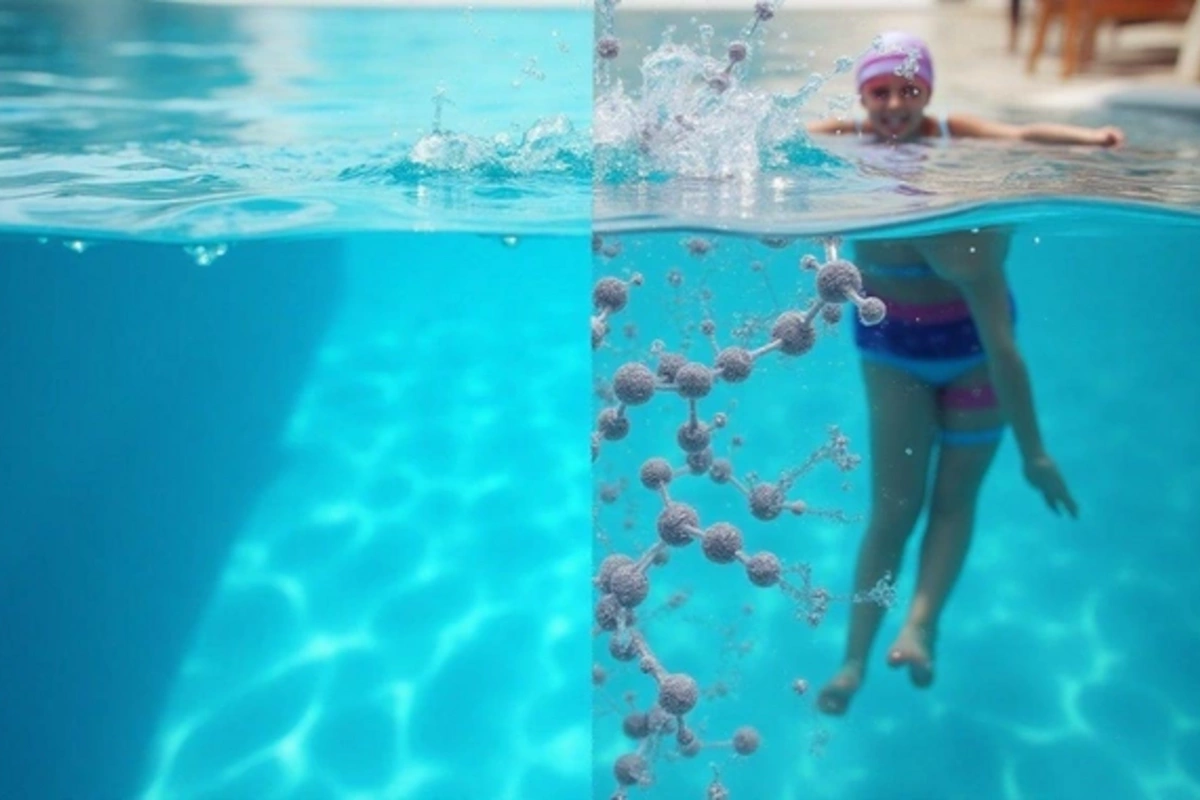30 May , 10:18
0

Chlorine in swimming pools: the invisible threat behind crystal clear water
Chlorine is the most common chemical used for disinfecting water in swimming pools. It effectively kills bacteria, viruses, and other microorganisms, but when used improperly, it can harm human health and the environment.
Effects on the respiratory system
When chlorine comes into contact with organic substances (such as sweat or urine), chlororganic compounds like chloramines are formed. These substances evaporate and irritate the respiratory tract. This often manifests as:
throat irritation;
coughing;
nasal congestion;
worsening of asthma in people with lung conditions.
Skin and eye irritation
Even with properly balanced chlorine levels, it can cause:
dry and itchy skin;
eye irritation and redness;
allergic reactions in sensitive individuals.
Risks for hair and nails
Chlorine damages keratin - the main protein that makes up hair and nails. As a result of frequent pool visits:
hair becomes brittle and dull;
nails may become layered and lose strength.
Long-term consequences
With prolonged exposure and inhalation of chlorine-containing vapors, chronic diseases may develop:
bronchitis;
asthma;
deterioration of the overall respiratory system.
Studies also link long-term exposure to trihalomethanes (chlorination by-products) with an increased risk of certain forms of cancer, especially among pool workers and professional swimmers.
Environmental harm
Discharge of chlorinated water into nature (rivers, soil) can lead to the death of aquatic organisms, disruption of ecosystem balance, and contamination of groundwater.
How to reduce harm from chlorine in pools
Shower before and after swimming - reduces water contamination and contact with chlorine.
Use of protective goggles and swimming caps.
Careful monitoring of chlorine levels and water pH.
Consideration of alternatives: ultraviolet purification, ozonation, salt systems.